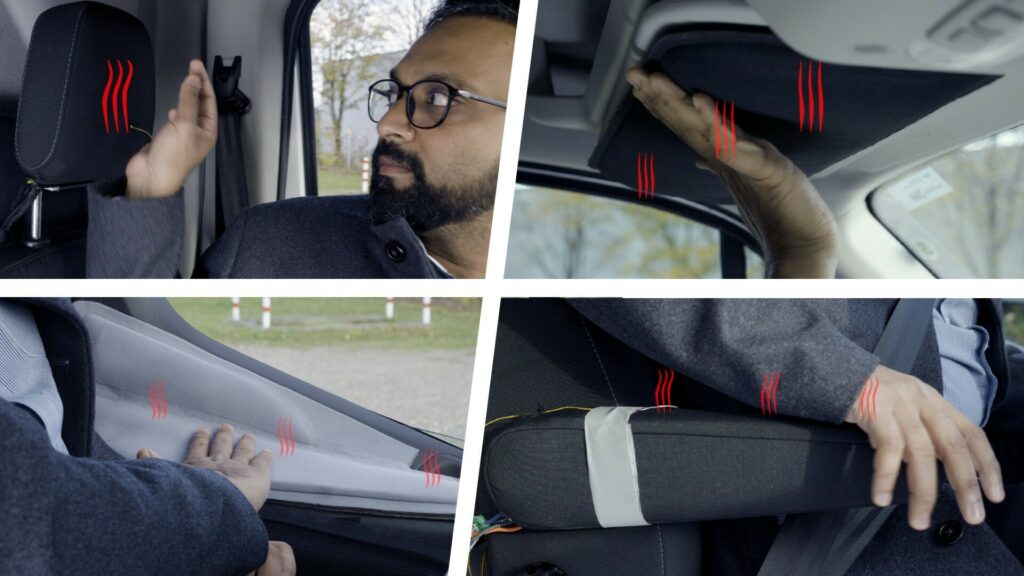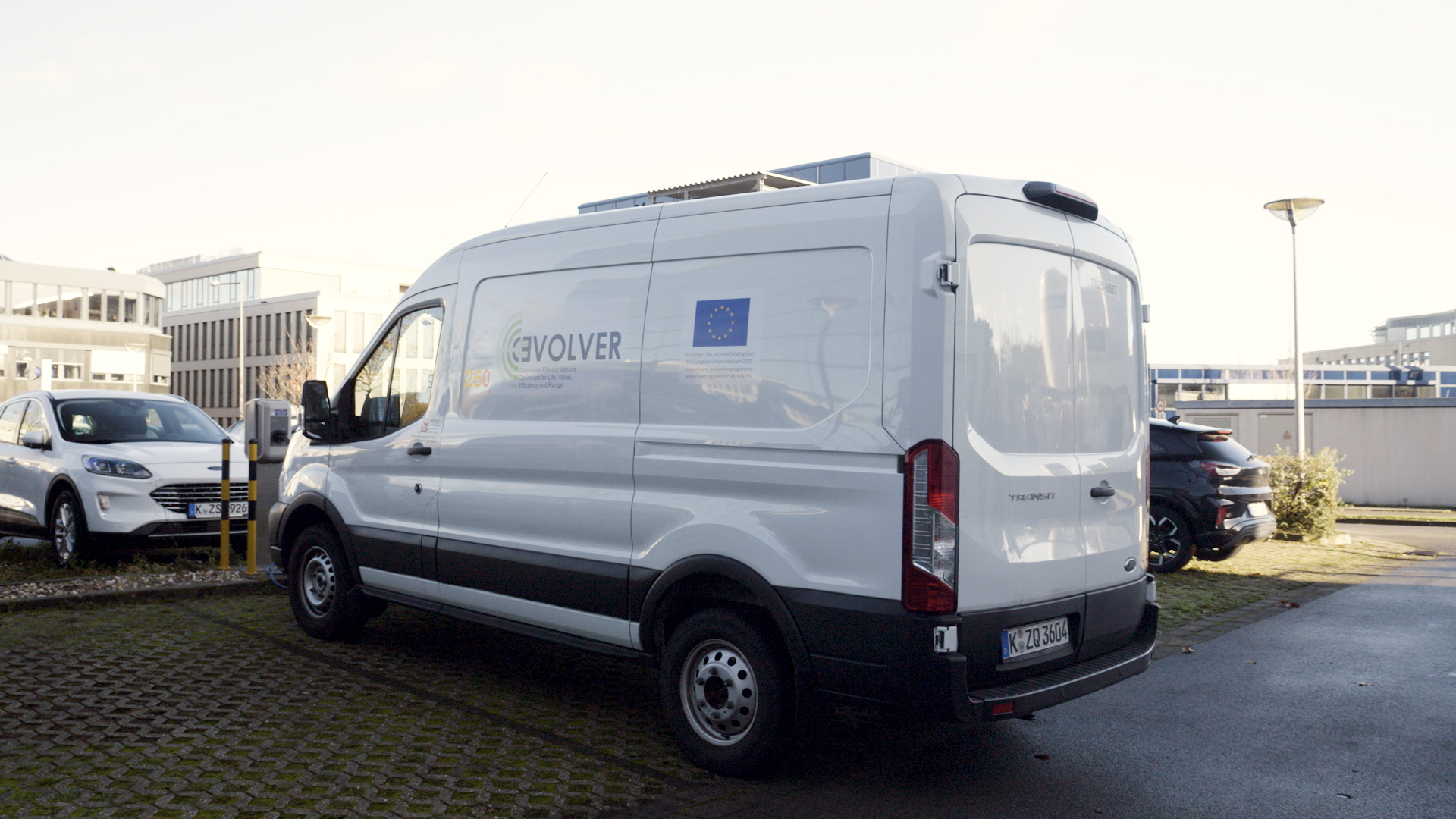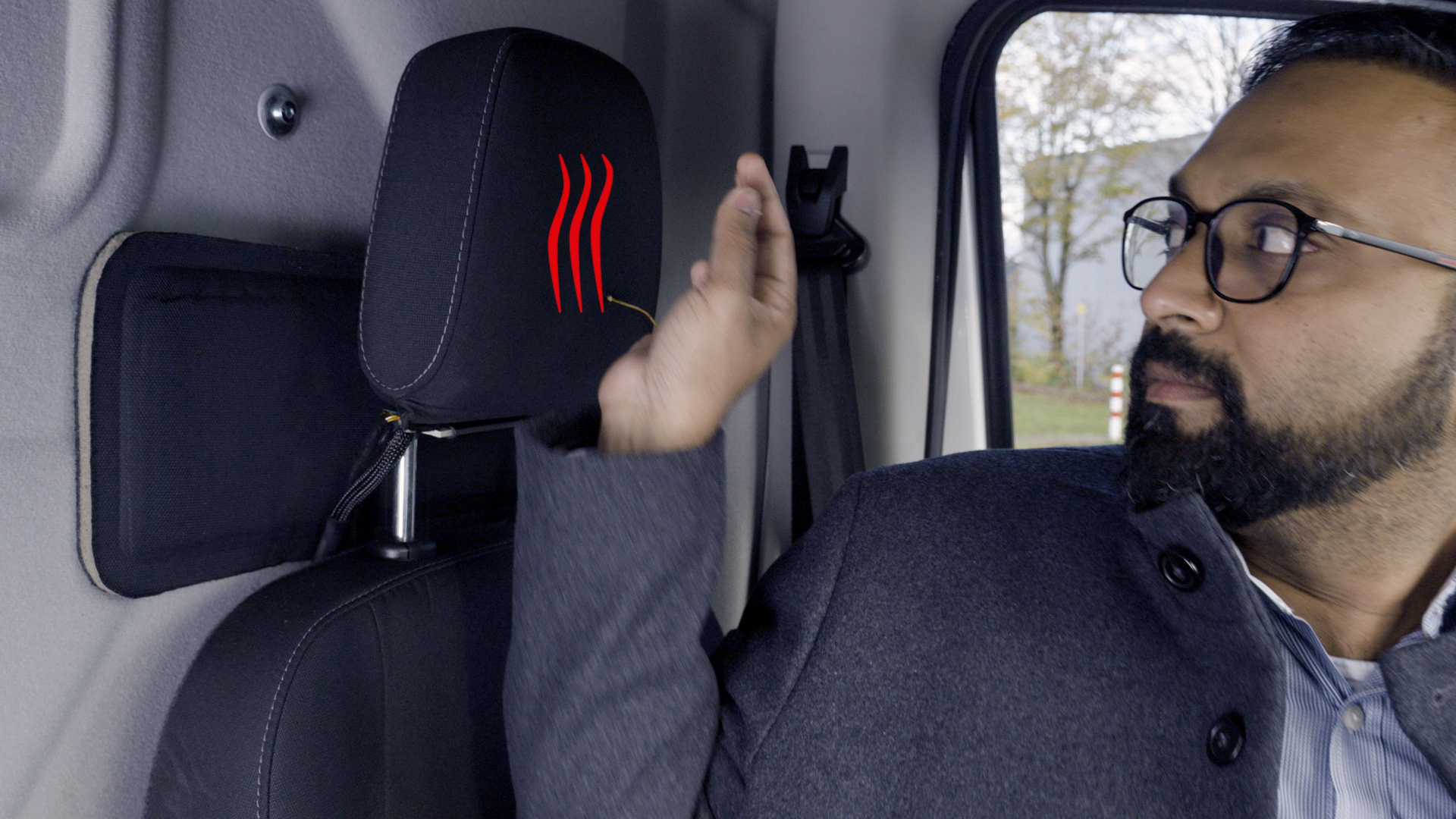Automakers are doing their best to increase the driving range of EVs trying out clever energy-saving solutions. In that context, Ford engineers discovered that adding more heated surfaces on the cabin of an EV is more efficient than using air-conditioning, increasing range by up to 5%.
Drivers of delivery vans open and close the doors hundreds of times every day, making it harder for the air conditioning to sustain the preferred temperature inside the cabin. An alternative solution is heated interior panels, which keep the driver warm in a more efficient way. We already knew the heated seats and steering wheel, but Ford expanded the feature on the headrests, armrests, door panels, floor mats, sun visors, and a panel below the steering wheel. In fact, the only part they missed is the seatbelt, although ZF recently revealed its own heated seatbelt for EVs.
Read: ZF’s Heated Seatbelt Will Keep You Warm While Increasing Your EV Range
The automaker tested the theory on a specially prepared Ford E-Transit which was used on delivery routes in different seasons (winter and summer) and in a variety of weather conditions (dry and wet roads, heavy rain, wind). All the surfaces radiating heat toward the driver and the passenger proved to be effective in keeping them warm. At the same time, energy consumption was up to 13% lower than a standard air conditioning system, accounting for 5% gains in EV range. This small percentage could make a great difference on a long-term basis, potentially adding hundreds of extra miles every year.
While the heated interior panels are not offered in any production vehicles at the moment, the automaker suggested that findings from the heat management testing have fed into the development of future vehicles. Other range-extending opportunities identified by Ford are eco-routing, cooling system modifications, and powertrain conditioning.
The research was part of the European Commission’s Connected Electric Vehicle Optimized for Life, Value, Efficiency and Range project (CEVOLVER) which run between 2018 and 2022. Ford wants the annual sales of EVs in Europe to reach 600,000 units by 2026, with its global annual EV production target exceeding the 2 million mark by the same year.











